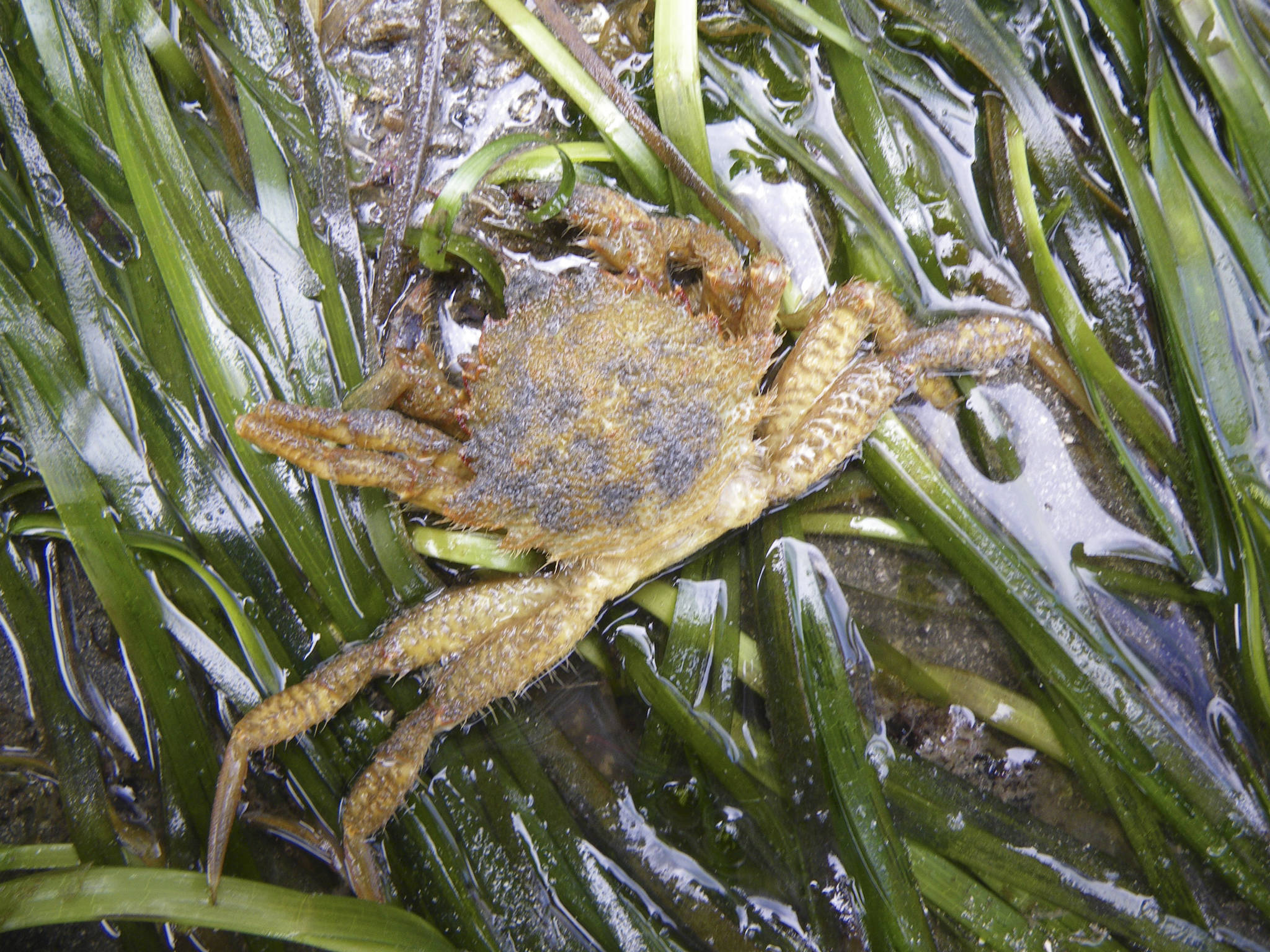Kwiaht and community scientists of the Indian Island Marine Health Observatory invite the public to the ninth annual monitoring report on Indian Island and Fishing Bay, Eastsound’s “window on the sea,” at the Episcopal Parish Hall in Eastsound, November 15. Doors open at 5:30 pm. Music, displays, tributes to volunteers and a slideshow presentation of this past year’s research results will be followed by a light buffet provided by the Orcas Village Store. Everything is free and family friendly.
Tourism is once again a focus of concern. Kwiaht volunteers on the beach spoke to 3,657 visitors last summer, or an average of 80 per day that the tide was out enough for the island to be easily accessible by foot. “That number does not include hundreds of people that waded or kayaked to the island on higher tides,” says Kwiaht director Russel Barsh, who estimates that total summer visitors were closer to 4,200. Although volunteers discouraged climbing the island itself while birds were nesting, foot traffic on beaches and tide pools was greater than ever. “The bay also grew measurably shallower and the tombolo shallower and wider, stretching the duration of low-tide accessibility by half an hour, so that visitors stayed longer.”
Eelgrass density took a sharp downturn after several years of growth. In fact, eelgrass density was the lowest since re” recordkeeping began in 2009. “Although acreage of eelgrass increased slightly, there are a lot of bare patches,” Barsh says. Winter storms redistributed a lot of sand and mud, he adds, which may have uprooted long-established plants. Accumulating mud is also reducing the abundance of “hard-shelled” clams such as steamers.
Populations of eelgrass-associated Bay Pipefish and Plainfin Midshipmen remain stable but overall fish diversity continued to decline to its lowest point in 10 years. Warmer water is probably a major factor, but the effect of contaminants from storm water runoff cannot be ruled out at this stage. “Ecologically, it is especially significant that we have seen no evidence of herring or other forage fish spawning in Fishing Bay for several years,” Barsh says.
The abundance and diversity of crabs, sea stars, sea slugs and other small invertebrates amongst the rocks and cobbles on the beach remains significantly lower than the baseline years 2010-2011. “This is our most meaningful measure of the impact of people,” Barsh says. “Most visitors walk over the beach to get to the scenic south rocks, and they frequently also turn over rocks on their way. We believe this is having a growing, adverse impact on the inter-tidal zone surrounding Indian Island.”
Volunteers also observed a fresh outbreak of Starfish Wasting Syndrome (SWS), but losses were relatively small and did not significantly affect sea star numbers. Sea star diversity improved somewhat, Barsh says, with the reappearance of small numbers of False Ochre and Imbricate stars. “What continues to be missing are the large predatory stars such as Sunflowers and Dawson’s, which were seen frequently in small numbers until a few years ago.”
This year’s review of tourism impacts on the Indian Island ecosystem is especially relevant since islanders have until the end of December to comment on the Bureau of Land Management’s proposed plans for the San Juan Islands National Monument. Released in mid-October, the draft suggests increasing and improving trails on Indian Island, and does not address protection of beaches and tide pools.
For more information email: info@kwiaht.org.



